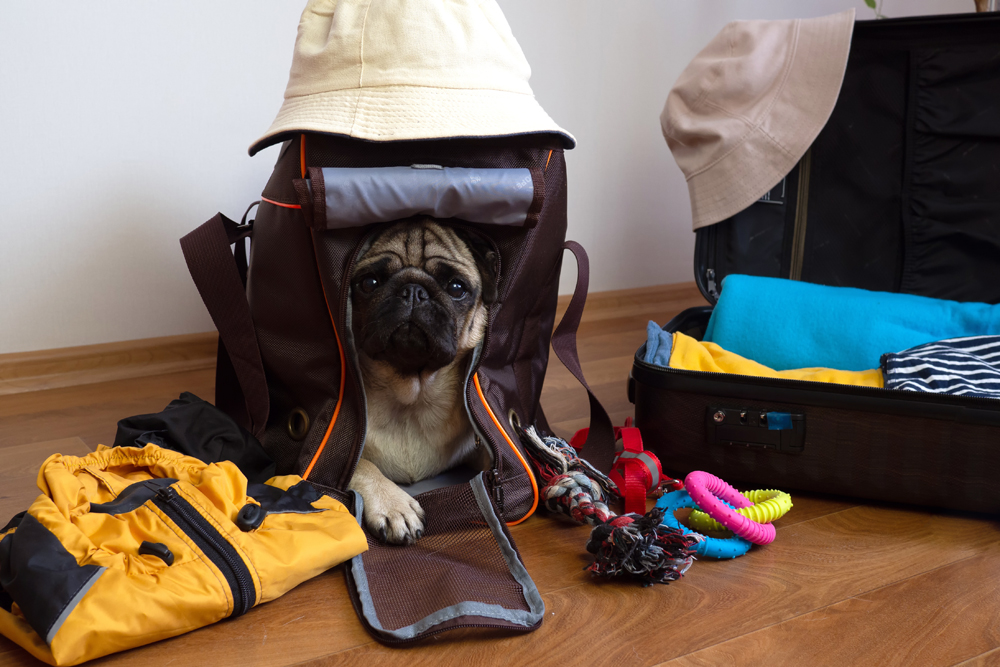Disaster preparedness is a critical aspect of companion animal health, one that is often overlooked until an emergency strikes. Natural disasters such as hurricanes, wildfires, earthquakes, and floods, as well as human-made crises, can place both humans and animals at risk. In recent years, increasing climate instability and population density have made preparedness for pets more urgent than ever. Pet owners, veterinarians, and emergency management agencies are working together to create strategies that protect animals during disasters, recognizing that pets are family members whose well-being is inseparable from human safety. Advances in planning, technology, and public awareness are transforming pet disaster preparedness into a central component of animal health news.
The Rising Importance of Pet Disaster Planning
One of the most significant shifts in disaster response over the past decade has been the recognition of pets in emergency management. In the past, animals were often excluded from evacuation plans, forcing owners to make heartbreaking decisions. Today, more communities and organizations acknowledge that disaster preparedness must include pets, as people are less likely to evacuate without them. This recognition has led to new policies, shelters equipped to handle animals, and education campaigns directed at pet owners. Veterinarians play a growing role in these efforts, ensuring that pets have access to preventative health measures such as vaccinations and parasite control before disasters strike, reducing the risk of disease outbreaks in shelters or temporary housing.
Advances in Emergency Shelter for Pets
Emergency shelters have evolved to accommodate the unique needs of animals during disasters. Many shelters now have designated spaces for pets, complete with kennels, sanitation protocols, and veterinary support. The creation of co-located shelters, where humans and their pets can remain together, has become a preferred model. This reduces stress for both owners and animals, ensuring that pets are not abandoned due to restrictive policies. Advances in mobile veterinary units also play an important role, providing care for animals in disaster zones where clinics may be inaccessible. These units are equipped to administer vaccinations, treat injuries, and offer basic preventive care, stabilizing animal health in chaotic environments.
The Role of Technology in Pet Disaster Preparedness
Technology is transforming the way pet owners prepare for and respond to disasters. Microchipping has become a standard preventative measure, ensuring that lost animals can be identified and reunited with their families even if collars or tags are lost. Smartphone apps now offer disaster alerts, pet-friendly shelter locations, and digital storage for medical records, streamlining response efforts. GPS-enabled collars provide real-time tracking, giving owners peace of mind and increasing the likelihood of recovery if pets become separated. Social media has also emerged as a powerful tool, allowing communities to share information about lost and found animals, temporary foster care, and supply distribution during emergencies. These technologies reduce the chaos of disasters, ensuring that pets are not forgotten in the rush to safety.
Veterinary Medicine and Disaster Response
Veterinarians have become essential responders in disaster preparedness and relief. Their expertise ensures that animal health remains a priority when conditions are unstable and resources are scarce. Advances in veterinary disaster medicine include training programs that prepare veterinarians for mass casualty events, triage situations, and infectious disease outbreaks that may follow natural disasters. Mobile diagnostic tools enable veterinarians to perform basic laboratory tests and imaging in the field, allowing for rapid assessment and treatment. Preventative care, such as ensuring vaccinations are up to date before disaster season, reduces the risk of disease spread in shelters. Veterinarians are also educating owners on creating pet emergency kits that include medications, food, water, and first-aid supplies, ensuring that animals’ health needs are met when normal services are disrupted.
Behavioral Health Considerations During Disasters
Disasters do not only affect the physical health of pets; they also have profound impacts on behavioral health. Stress, fear, and disorientation are common responses in animals during emergencies. Advances in understanding animal behavior have highlighted the need for strategies to reduce stress in disaster situations. Owners are now encouraged to crate train pets in advance, making evacuation smoother and less traumatic. Veterinary behaviorists recommend comfort items such as blankets or toys to provide familiarity in shelters. In some cases, medications may be prescribed to manage acute anxiety. Recognizing behavioral health as part of disaster preparedness ensures that pets are not only physically safe but also emotionally supported during crises.
Community Involvement in Pet Preparedness
Community-based programs are increasingly important in promoting pet disaster preparedness. Local organizations, shelters, and veterinary clinics often host preparedness fairs and workshops, teaching owners how to develop evacuation plans that include pets. Community networks also provide foster care options for pets when owners are unable to care for them due to displacement. Advances in community engagement include neighborhood preparedness groups that integrate pets into disaster drills and response strategies. These efforts foster resilience, ensuring that both humans and animals receive coordinated support when disasters strike. By involving entire communities, preparedness becomes a collective responsibility rather than an individual burden.
Policy Developments and Legislative Support
Legislation has played a major role in advancing pet disaster preparedness. Policies now mandate that emergency management agencies include animals in disaster response plans, a shift driven by public demand and recognition of the human-animal bond. Laws require shelters to accept pets during evacuations, and funding has been allocated to support the development of pet-friendly facilities. Veterinary associations are also advocating for standardized disaster preparedness protocols, ensuring consistency across regions. These policy developments create a framework that protects animal welfare while reinforcing the importance of preparedness at every level, from individual households to federal agencies.
Advances in Training and Education
Education has become a cornerstone of disaster preparedness for both pet owners and professionals. Veterinary schools are incorporating disaster medicine into their curricula, preparing future veterinarians to serve in emergency situations. Emergency responders receive specialized training on handling animals safely and humanely during evacuations. For pet owners, online resources and community workshops provide step-by-step guidance on building disaster kits, planning evacuation routes, and ensuring pets are microchipped. Advances in virtual training platforms have made this education more accessible, allowing owners to prepare from home. By equipping both professionals and the public with knowledge and skills, preparedness efforts are strengthened across the board.
Lessons from Recent Disasters
Recent disasters have provided valuable lessons in pet preparedness. Wildfires in the western United States highlighted the need for rapid evacuation strategies, while hurricanes underscored the importance of pet-friendly shelters and reunification systems. The COVID-19 pandemic demonstrated the vulnerability of animal care systems during prolonged crises, emphasizing the importance of long-term preparedness plans that include veterinary services. These experiences have driven innovations in planning, such as pre-registration systems for pet shelters, supply stockpiles, and partnerships between veterinary organizations and emergency management agencies. Each disaster reinforces the importance of integrating pets into response efforts, ensuring that mistakes are not repeated in future emergencies.
The Global Perspective on Pet Preparedness
Pet disaster preparedness is not limited to one region but has become a global concern. In areas prone to earthquakes, tsunamis, or floods, communities are developing tailored strategies to protect animals. International organizations are promoting standardized guidelines for animal disaster response, sharing best practices across borders. Advances in global collaboration include international rescue teams that assist with animal welfare during large-scale disasters. These efforts recognize that animals play vital roles in human societies worldwide, from companions to working animals, and that their protection is a universal responsibility. By learning from global experiences, local communities can adopt innovative strategies and improve resilience.
The Future of Pet Disaster Preparedness
The future of pet disaster preparedness will likely be shaped by continued advances in technology, policy, and public awareness. Artificial intelligence may play a role in predicting disasters and guiding evacuation strategies that include pets. Wearable devices could provide real-time monitoring of animal health during evacuations, alerting veterinarians to signs of distress. More robust public-private partnerships will enhance resource distribution, ensuring that shelters and veterinary teams are equipped to handle large numbers of animals. The cultural recognition of pets as integral family members will continue to drive innovation, ensuring that animals are never left behind. Ultimately, the goal of pet disaster preparedness is to safeguard the health and well-being of animals while supporting the human families who rely on them for companionship, comfort, and strength.

